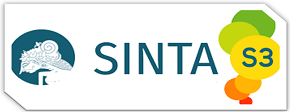Model Evaluasi Strategi Wisata Lontar Sewu Dalam Meningkatkan Citra Destinasi
DOI:
https://doi.org/10.30587/jurnalmanajerial.v10i02.5495Keywords:
Tourism, Village, Strategy, Evaluation, Balanced, ScorecardAbstract
Background – The development of a tourist village can improve welfare and preserve local cultural and customary values. Lontar Sewu Tourism is a tourism village in Gresik district with a uniqueness in the many step trees called lontar which are created with playing and learning arenas. However, currently lontar sewu tourism is faced with competition between natural and
artificial tourism in Gresik, especially those that require control and evaluation to increase competitiveness.
Aim – To evaluate the Lontar Sewu Tourism strategy in enhancing the image of the destination.
Design / Methodology / Approach – This study uses qualitative methods. The research location used as the research location is Gresik Regency. The site in this research is Lontar Sewu Tourism, located in Hendrosari Village, Gresik Regency. Primary data in this study were taken from interviews and observations of 13 informants consisting of 3 managers and 10 consumers or visitors to the lontar sewu tour. Data collection techniques used in this study were interviews and questionnaires. Data analysis techniques use content analysis, content analysis and matrix as instruments. The matrices used for strategy evaluation tools are Internal Factor Evaluation (IFE), External Factor Evaluation (EFE), Internal-External (IE) and Balance Score Card (BSC).
Findings – The current condition of Lontar Sewu Tourism has an IFE score of 3.57 and an EFE score of 3.05. This indicates a strong position in the competition, so that the IE matrix is in quadrant I, namely growing and developing. In the evaluation using the Balance Scorecard, it is known based on 5 perspectives namely: customers, employees, business processes, business ethics and social responsibility, currently the performance of lontar sewu tourism is quite good, but there is no balance yet because it has not been able to display strategic goals from a financial perspective linked from a customer perspective. The image of the Lontar Sewu Tourism destination is currently still quite good, so it needs development referring to the results of the Balance Scorecard. This finding aligns the strategic manager's that strategy evaluation is very important for organizational well-being; timely evaluation can alert management of problems or potential problems before a situation becomes critical.
Conclusion - Lontar Sewu Tourism has tourism potential that will continue to grow, however, there is a need for synergy between the financial perspective and the customer in the Balance Scorecard.
Research Implication – The results of this study can be used as a reference regarding the practice of strategic management studies and marketing management related to competition in the tourism business and tourism villages in particular.
Limitations – Research is limited to financial data owned by strategic managers, so that the evaluation of the Balance Scorecard related to the financial perspective cannot be displayed because there is no data regarding Return of Equity (ROE).
References
Aslamiyah, S. 2022. Implementasi strategi desa wisata lontar sewu desa hendrosari kabupaten Gresik. UMMagelang Conference Series, 292–300.
Ardianto, Ryan., Kurniawan, Rina. 2019. Evaluasi Dan Pengembangan Strategi Bisnis Perusahaan Menggunakan Balanced Scorecard. Jurnal Kalibrasi, Vol. 17 No.1 (2019).https://doi.org/10.33364/kalibrasi/v.17-1.676.
Blain, C., Levy, S., dan Ritchie, J.R.B., (2005), Destination Branding : Insights and Practices From Destination Management Organization, Journal of Travel Research, Vol.43, No.4.
Luckyta, A. C., Kartika, L., & Rahmawati, S. 2020. Evaluasi Kinerja Organisasi Menggunakan Balanced Scorecard . INVEST : Jurnal Inovasi Bisnis Dan Akuntansi, 1(1), 38-44. https://doi.org/10.55583/invest.v1i1.15.
Muniroh, Neng Ira., dkk. 2020. Model Strategi Hubungan Masyarakat dalam Meningkatkan Citra Pariwisata melalui Kampanye Wonderful Indonesia. PARAHITA: Jurnal Pengabdian kepada Masyarakat, Vol 1(2), 2020, 55-65 https://doi.org/10.25008/parahita.v1i2.50.
Echtner, Charlotte M and Ritchie J.R. Brent, (1991). “The Meaning and Measurement of Destination Image. The Journal of Tourism Studies. Vol 2.No.2. pp 2 – 12.
Kurniawan, C.J., (2014), Studi Deskriptif Destination Image Kota Malang Menurut Perspektif Wisatawan Surabaya. Jurnal Ilmiah Mahasiswa Universitas Surabaya, Vol. 3, No.2.
Hakim, 2023. Pemkab Gresik wujudkan desa wisata tingkatkan kesejahteraan warga. Online pada tanggal 8 oktober 2022. Melalui https://jatim.antaranews.com/berita/645793/pemkab-gresik-wujudkan-desa-wisata-tingkatkan-kesejahteraan-warga.
Putra, H., & Putra, I. 2020. Pengembangan Objek Wisata Berwawasan Lingkungan Hidup. Journal of Civic Education, 2(4), 459-467. https://doi.org/10.24036/jce.v2i5.284
Ruliana, P. 2016. Komunikasi Organisasi: Teori dan Studi Kasus. RajaGrafindo Persada.
(http://www.berdesa.com/apa-beda-desa-wisata-dan-wisata-desa).
T. L. H. Whelen. 2003. Manajemen strategis, Yogyakarta: Andi Offset,.
J. A. Pearch, 2016. Manajemen Strategi : Formulasi, implementasi, dan pengendalian, Jakarta: Salemba empat.
David, Freed. 2017. Manajemen strategik: suatu pendekatan keunggulan bersaing, Jakarta: Salemba Empat,.
Sugiyono. 2009. Metode penelitian kuantitatif, kualitatif dan R&D, Bandung: Alfabeta.
L. J. Moleong. 2009. Metodologi penelitian kualitatif, Bandung: PT Remaja Rosdakarya Offset,.
R. K. Yin. 2011. Qualitative Research from Start to Finish, New York: The Guilford Press.






























 P-ISSN: 2354-8592 __ E-ISSN: 2621-5055
P-ISSN: 2354-8592 __ E-ISSN: 2621-5055 
